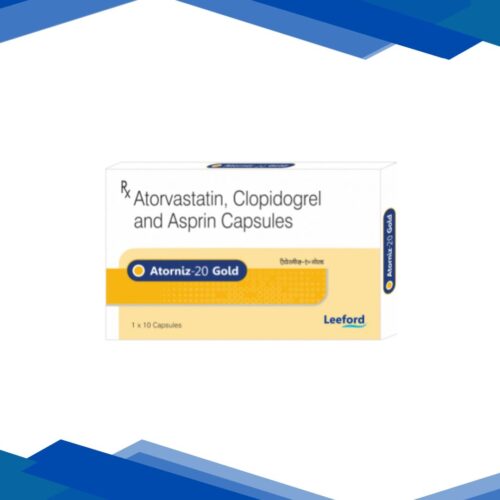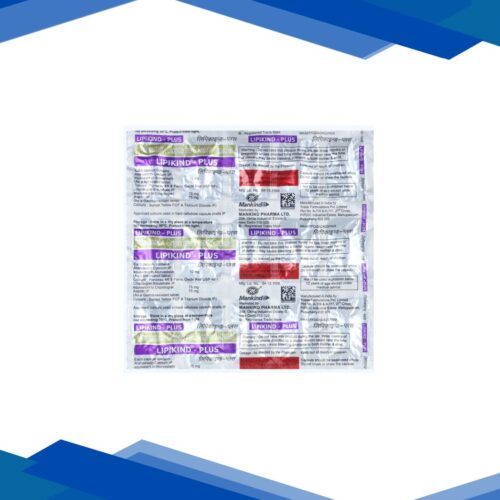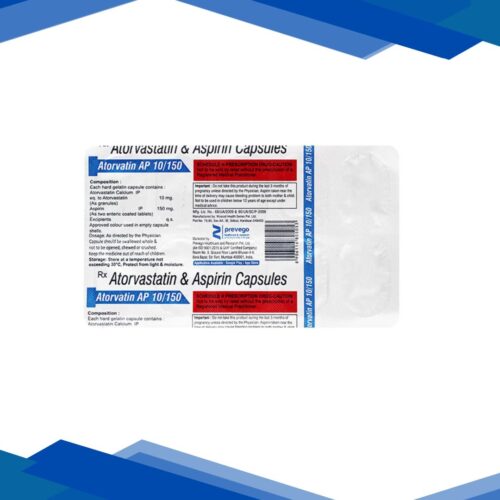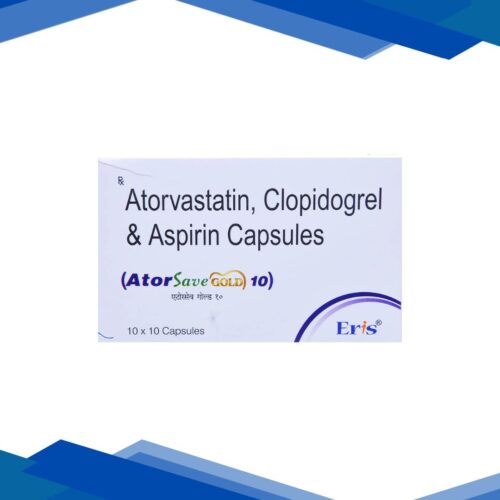Atorvastatin
ATORVASTATIN
Overview:
Atorvastatin is commonly prescribed to help manage high cholesterol levels and reduce the risk of heart disease. It works by controlling the amount of “bad” cholesterol (LDL) and raising the “good” cholesterol (HDL) in your blood. This helps keep your heart and blood vessels healthier over time.
Classification: Cholesterol-lowering medication
Uses:
Lowers high cholesterol and triglycerides
Helps prevent heart attacks and strokes, especially in people with diabetes, high blood pressure, or a family history of heart problems
Slows the buildup of plaque in arteries (atherosclerosis)
How It Works:
Atorvastatin works by blocking an enzyme in the liver that your body uses to make cholesterol. By reducing cholesterol production, it lowers LDL (“bad” cholesterol), slightly increases HDL (“good” cholesterol), and helps clear triglycerides from the blood. This keeps blood vessels clearer and improves circulation, lowering the risk of serious heart events.
Dosage: As prescribed by your doctor.
Side effects:
While many people tolerate it well, some may notice:
Muscle pain or weakness
Digestive issues like nausea, constipation, or stomach upset
Headache
In rare cases, liver problems or severe muscle damage may occur
Precautions:
Let your doctor know if you have a history of liver disease or muscle disorders
Avoid heavy alcohol use while taking this medicine
It may interact with certain drugs—tell your doctor about all the medications and supplements you take
Pregnant or breastfeeding women should not use atorvastatin
Routine blood tests may be needed to check liver function and cholesterol levels
Disclaimer:
This content is for informational purposes only. Always consult a healthcare provider for medical advice and proper dosage
Cholecalciferol
CHOLECALCIFEROL
Overview:
Cholecalciferol, commonly known as Vitamin D₃, plays a vital role in helping the body absorb calcium and phosphorus, which are necessary for maintaining healthy bones and teeth. It is often taken as a supplement to prevent or address vitamin D deficiency, especially in those who have limited exposure to sunlight or suffer from certain medical conditions.
Classification:Vitamin D analogs
Uses:
Cholecalciferol or vitamin D3 is used as a preventive and treatment supplement of vitamin D deficiency in people that may not obtain adequate levels through sunlight or their food. It helps the body to absorb calcium and phosphorus that play an important role in forming and building strong bones and teeth. The use of this vitamin in the treatment of some conditions like rickets, osteomalacia and osteoporosis are common.
How it works:
Vitamin D 3 or Cholecalciferol, plays its role by increasing the absorption of calcium and phosphorus in the food ingested in the intestines. When it gets into the body, the liver and the kidney convert it to its active form, calcitriol. This active form is an important process to control the level of calcium in the blood and to build bones as well as keep bones sturdy and healthy. Lack of vitamin D 3 may slow down the absorption of calcium and hence lead to weak or soft bones.
Dosage:As prescribed by your doctor
Side effects:
Nausea or vomiting
Constipation
Weakness or tiredness
Increased thirst and urination
Precautions:
Prior to taking cholecalciferol it is essential to inform your physician about any kidney ailments you may have an as well as of any increased calcium in the blood or diseases, such as sarcoidosis that may interfere with how your body uses vitamin D. One should avoid overdosing the body with vitamin D since it may cause excess calcium in the blood that may cause nausea, tiredness or kidney problems. It should only be used with the supervision of a doctor by those who are pregnant, nursing, and those consuming other supplements or medications. Always keep yourself hydrated and make sure to use it as per the instructions of your doctor.
Disclaimer:This content is for informational purposes only. Always consult a healthcare provider for medical advice and proper dosage.

















